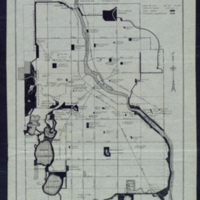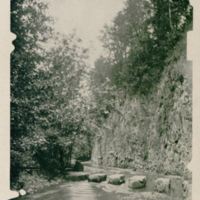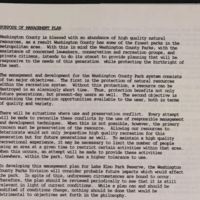...or Natural?
Excerpted from a 1989 management plan for the Lake Elmo Park Reserve in Washington County, Minnesota, this text highlights the more common modern desire to preserve parks' natural features and resources rather than transform them, while also providing access and recreational opportunities. Courtesy of the Washington County - Parks Division via Minnesota Digital Library.
Towns in the Midwest and on the frontier in the late 1800s benefitted from being aware of the discussions of the value and benefits of public parks, and the example of Central Park, before their cities had yet grown too large. Those with forward-thinking planners were sometimes able to preserve areas of natural beauty for the public good. It was a balancing game of having enough of a population and tax base to have funds to purchase land, while land was still affordable and not yet developed.
It was not necessarily an easy road. An 1865 meeting in Minneapolis, Minnesota, held to discuss the idea of acquiring a central park, elicited responses like "Why do we need a park? There will never be a house south of Tenth Street." or "The whole city south of Franklin is a park."
Lovely natural features in many cities were lost to industrial development due to lack of funds or the will to preserve them. But many were indeed preserved and remain as parks today.
As cities have continued to expand, in recent decades the issues of preservation and public access have reached suburban and exurban areas as well, leading to the development of county and regional park systems.





